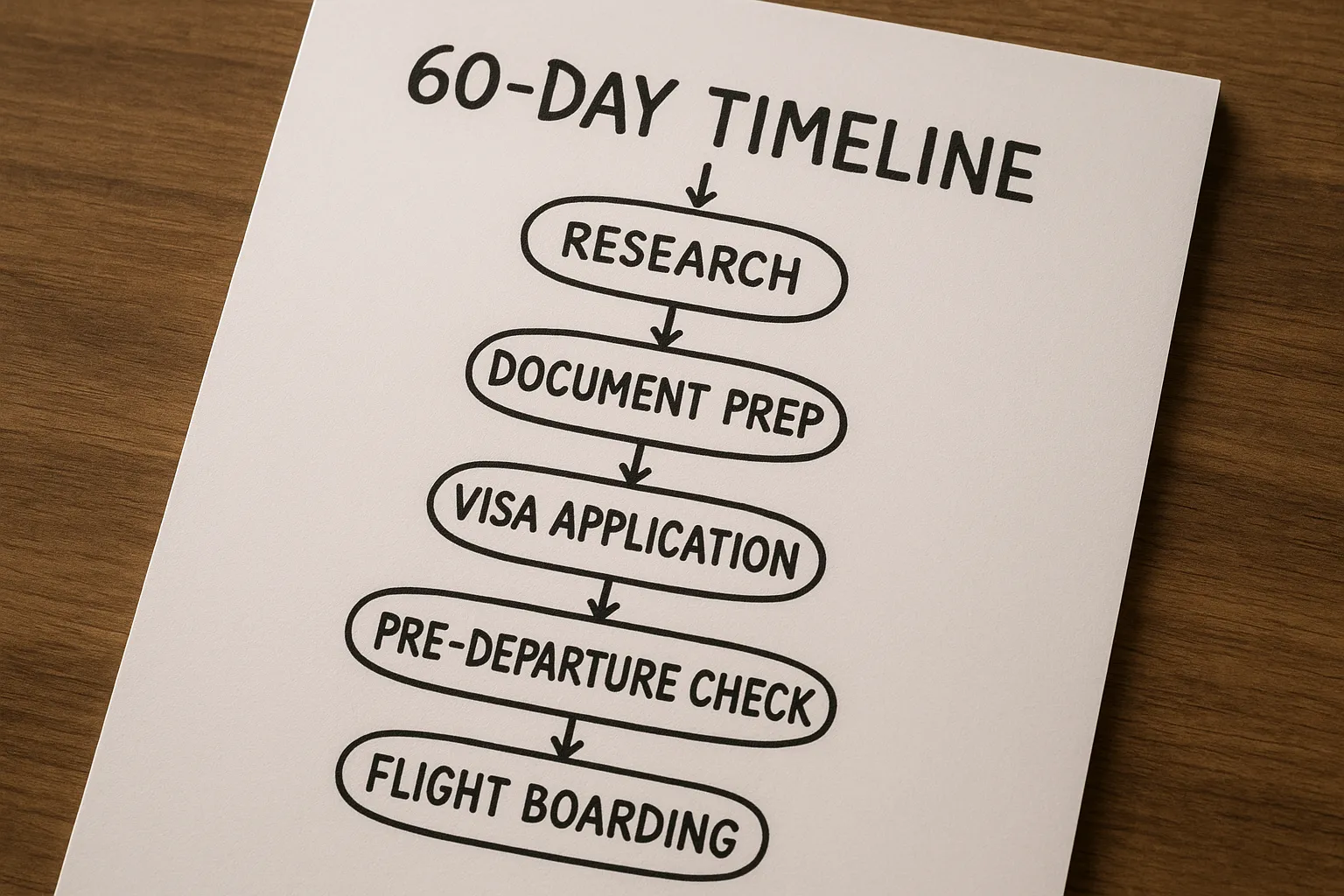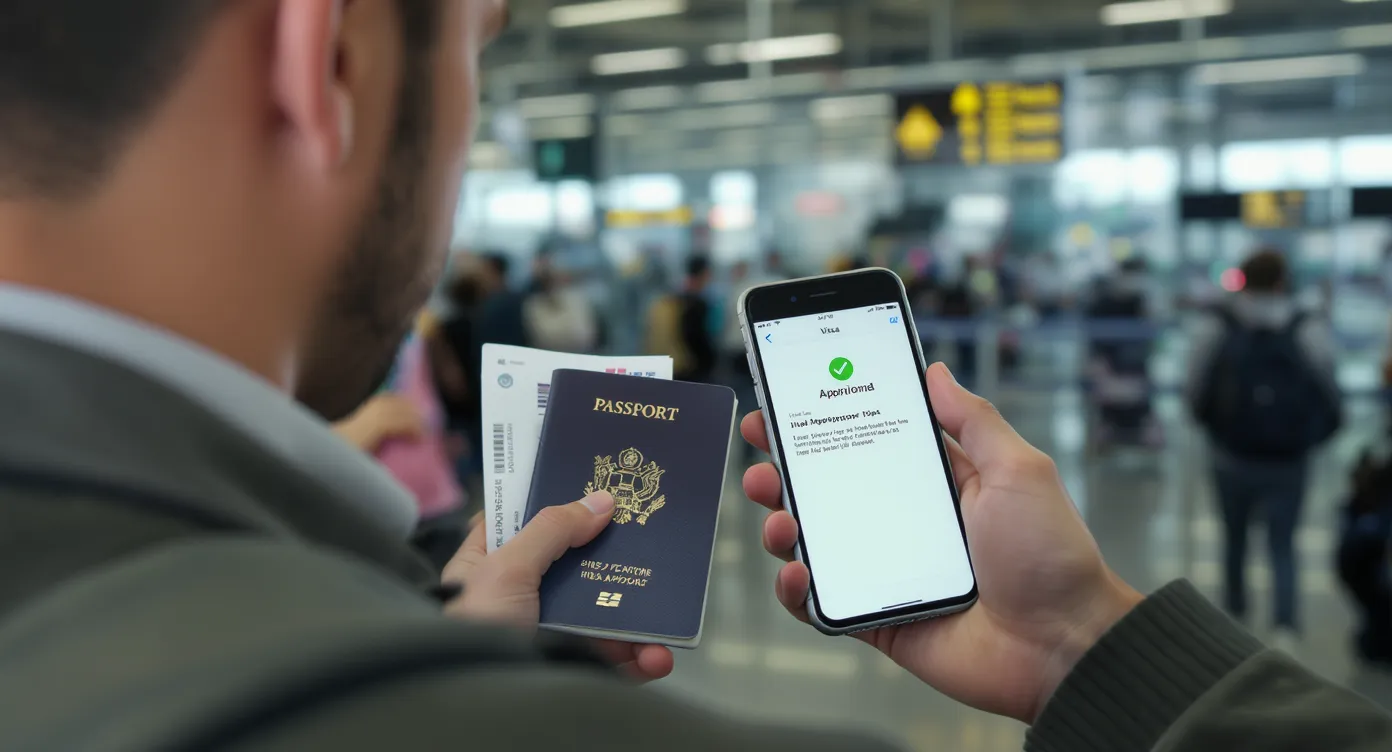Travel Visa Basics: What to Know Before You Book

Booking flights and hotels is exciting—but forgetting about visa requirements can turn that dream trip into an expensive headache. In 2024, IATA recorded more than 40 000 instances of passengers denied boarding for documentation issues, costing travelers an average of US $1 825 in change fees and lost bookings. A quick visa check before you confirm your itinerary is the smartest travel investment you can make.
What Is a Travel Visa?
A travel visa is an official authorization issued by a country that allows a foreign visitor to enter, stay, or transit for a specific purpose and duration. Depending on your passport, destination, and reason for travel, the permit may arrive as:
- Traditional sticker or stamp placed in your passport at a consulate or on arrival.
- Electronic visa (e-Visa) delivered as a PDF with a QR code after an online application.
- Electronic travel authorization (eTA/ESTA/ETA)—a lightweight pre-screening linked to your passport number.
Visa, e-Visa, eTA or Visa-Free? A Quick Comparison
| Status | Typical Processing | Stay Limits | Who Applies? |
|---|---|---|---|
| Visa (sticker) | Days to weeks at an embassy | 30–365 days, single or multiple entry | Travelers whose nationality is not visa-exempt |
| e-Visa | Minutes to a few days, fully online | 30–90 days in most programs | Travelers from eligible countries (India, Kenya, Vietnam, etc.) |
| eTA / ESTA / ETA | Seconds to hours | Up to 90 days (varies) | Visa-exempt nationals for destinations such as the USA, Canada, UK, EU Schengen (ETIAS soon) |
| Visa-Free | None | 15–180 days, per bilateral agreement | Passport holders of countries with mutual visa-waiver treaties |
If you are new to digital travel permits, see our guide on the difference between an electronic visa and a regular visa for deeper detail.
Five Things to Check Before You Confirm Your Trip
1. Entry Requirements by Nationality
Start with official sources:
- Government immigration portals (e.g., travel.state.gov, gov.uk, immi.homeaffairs.gov.au).
- IATA Travel Centre for airline-verified rules.
- Reputable visa platforms such as SimpleVisa’s country search (data refreshed daily).
Pro tip: requirements can change with little notice—always re-check a week before departure.
2. Passport Validity Rules
Many countries demand at least six months of validity beyond your intended exit date and at least one blank page. Renew early if your passport is close to expiration; expedited services often cost more than the trip itself.
3. Processing Times and Lead Time Buffers
Processing can vary from instant (Australia ETA) to eight weeks (some embassy visas). Build a timeline like this:
- T-60 days – Research requirements, gather documents.
- T-45 days – Submit embassy visas.
- T-30 days – File e-Visa or eTA applications.
- T-7 days – Download, print, or add digital copies to your phone wallet.
Need a deeper dive? Read When should I apply for an electronic visa? for destination-specific guidance.
4. Total Costs
Factor in:
- Government fees (US $7 for ETIAS, up to US $160 for some consulate visas).
- Service or courier charges.
- Hidden extras: translation, photo booths, notarization, vaccination certificates.
5. Conditions of Stay
Visas and e-Visas often restrict activities (no paid work), impose registration rules, or cap consecutive days in country. Overstaying by even one day can trigger fines, deportation, or future entry bans. Our article How long is a USA electronic visa valid? illustrates how validity and stay lengths differ.
Common Pitfalls (and How to Avoid Them)
- Booking non-refundable flights before visa approval.
- Opt for flexible tickets or hold reservations until your permit is granted.
- Inconsistent personal data. Names on the visa must match the machine-readable line of your passport.
- Low-resolution document uploads. Follow pixel and file-size rules; blurry photos are a top cause of rejection.
- Ignoring transit visas. Even short layovers (e.g., through Doha or Istanbul) may trigger separate requirements.
- Relying solely on third-party agents. Always cross-check on official portals to avoid scams. See Electronic visa scams: how to protect yourself.
Timeline Template: From Idea to Boarding

| Phase | Recommended Window | Key Actions |
|---|---|---|
| Research | 60–45 days before travel | Check visa rules, passport validity, vaccination mandates |
| Document Prep | 45–35 days | Scan passport, take compliant photos, collect financial/itinerary proof |
| Apply | 35–7 days | Submit visa/e-Visa/eTA, pay fees, track status |
| Approval & Verification | 7–3 days | Print digital permit, verify dates, share copies with travel partners |
| Departure | Travel day | Carry passport, visa, supporting documents (return ticket, hotel confirmation) |
Planning Multi-Country Itineraries
Visiting several countries on one trip? Map entry rules in a spreadsheet. Note overlapping validity windows—for example, you can use a Schengen ETIAS to enter France, Spain, and Italy repeatedly within its 90-day-in-180-day allowance. Add reminders for sequential applications if one country requires proof of a granted visa from the previous destination.
How SimpleVisa Simplifies the Process
SimpleVisa aggregates real-time entry rules for more than 220 destinations and automates application steps:
- An embedded widget in partner booking flows tells travelers instantly whether they need a visa, e-Visa, or nothing at all.
- A white-label portal guides you through required fields, compresses and validates photos, and tracks status in one dashboard.
- Travel brands can tap our API to surface visa fees and turnaround times next to flight prices—raising transparency and ancillary revenue.
We’re proud of a 97 % approval rate across 4 million processed applications. Still comparing options? Our post on Travel document automation 101 explains how to evaluate platforms like ours.
Final Checklist Before You Click “Book”
- Confirm visa or eTA requirement for every passport you will use.
- Ensure passport validity (6+ months, blank pages).
- Calculate processing time and submit early.
- Budget for all government and service fees.
- Understand stay limits and activities allowed.
- Have digital and hard copies ready for border control.
With these basics covered, you can lock in flights and hotels knowing the border won’t be a barrier. For personalized guidance—or to integrate real-time visa rules directly into your booking experience—visit simplevisa.com or request a demo today.
